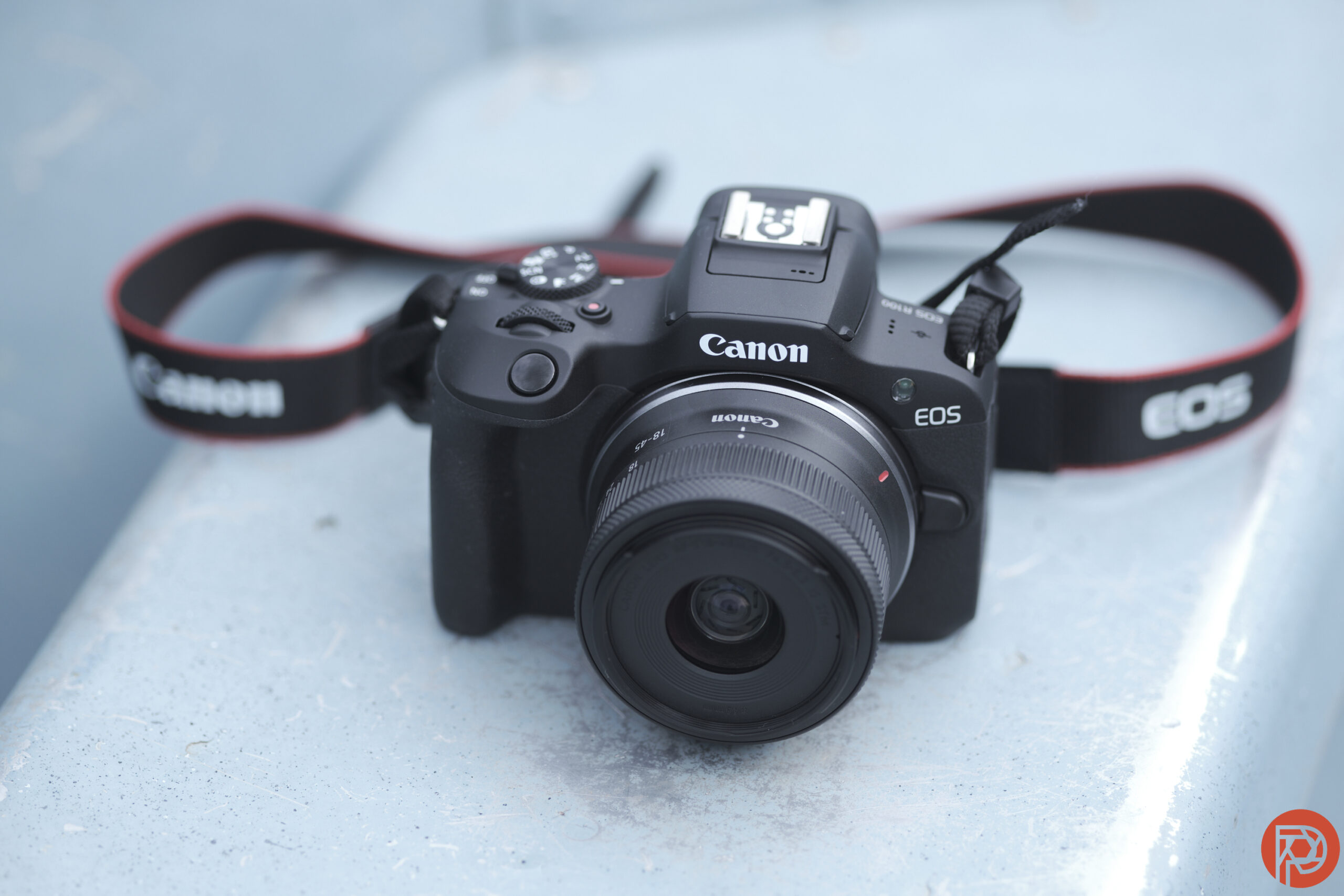I started my career with a $600 DSLR. It was the only camera I could afford at the time, working for $10 an hour at a small newspaper while still attending college. That start has instilled in me a respect for the basic budget camera, the simple bodies designed to get beginners hooked on photography. As a mirrorless body that sells for under $500, the Canon EOS R100 is one of those budget bodies. The question with any basic camera, however, is this: is this the kind of camera that will get a complete novice hooked on photography or leave a bad taste in their mouths that has them reaching back for that smartphone instead?
The Phoblographer may receive affiliate compensation for products purchased using links in this blog post.
With an APS-C sensor and access to Canon’s RF lenses, The Canon R100 delivers impressive images for the sub-$500 price tag. However, Canon has slashed many of the biggest user-friendly features that serve as the most significant boost to new photographers. Stabilization? None. Touchscreen? Nada. Tilt screen for vlogging? Nope. Animal Eye AF? Keep dreaming. Yes, the Canon R100 is cheap — but it’s also slower than my iPhone.
Table of Contents
The Big Picture
Canon is dominating the sub-$600 mirrorless market. Go to your favorite camera retailer and type in “mirrorless camera,” then limit the search to $600 or less — and most of the results are going to be Canon bodies. Canon is also doing a pretty good job at tossing out some affordable prime lenses as well. At under $500 for just the body and at about $600 with a lens, the Canon EOS R100 is one of the cheapest mirrorless cameras out there. And, for the price, the R100 takes lovely images. Unlike the Canon M50, the R100 supports Canon’s R lenses, which are newer and more plentiful than the M series lenses.
However, the best thing about the R100 is the price. The lack of a tilting touchscreen is going to frustrate the beginners and vloggers that the R100 is directed at. The performance is also slower than a smartphone, with a short buffer that leaves you waiting for the photos to finish recording before you can take more, view what you shot, or adjust settings. Beginners could also benefit from stabilization to avoid blurry images from hand shake — another thing that this camera lacks.
Entry-level cameras should be gateway drugs that get new photographers hooked on taking photos. But, the user experience on the R100 is lacking and may leave some new photographers frustrated. The Canon EOS R100 is good for cheap, high-quality snapshots, but new photographers, content creators, and vloggers are going to outgrow this slow camera too quickly. I’m giving the Canon EOS R100 two out of five stars.
Pros
- Canon’s most affordable mirrorless body at $480, or $600 with a lens
- Image quality is great for the price point
- The intelligent auto mode is beginner-friendly
- It’s compact and lightweight
Cons
- Electronic shutter only
- No stabilization
- Lacks a touchscreen
- Screen also lacks tilt functionality
- Lacks Animal Eye AF
- Slow buffer only records 6 RAW frames at a time
- Older processor produces more noise in low light
Gear Used
I used the Canon EOS R100 with the 18-45mm kit lens, the R 70-200mm f4, and the RF 28mm f2.8 lenses. All gear was on loan from Canon.
Innovations
Technically, the Canon R100 was launched in 2023. But it’s already an aging camera. That’s because it’s essentially the 2018 M50 with a new exterior and mount. It has the same processor as the older camera and the same resolution — and it’s actually a bit slower than the older camera. The key difference is that it supports Canon’s R lenses. R lenses are a better investment than M lenses because that’s where Canon’s focus is. There are many more choices for R lenses and room to grow later on with a more advanced body without replacing all the lenses.
Ergonomics
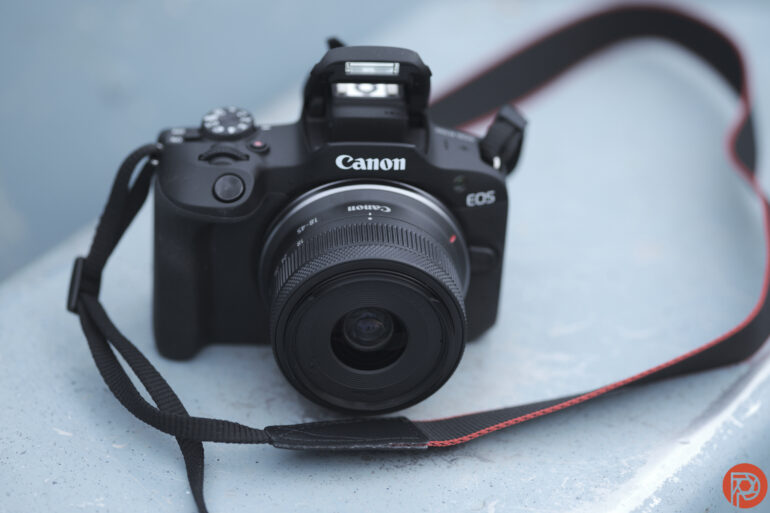
While Canon’s high-end mirrorless bodies have ergonomics reminiscent of DSLRs, the R100 feels more reminiscent of the Canon EOS M50. It’s a super compact but plasticky camera body with minimal bells and whistles. That, sadly, reduces the size of the grip as well — it’s less comfortable than Canon’s higher-end options like the R6. The low weight makes up for it some — it weighs just .8 pounds, making it a cinch to carry around, especially with lenses like the RF 28mm f2.8.
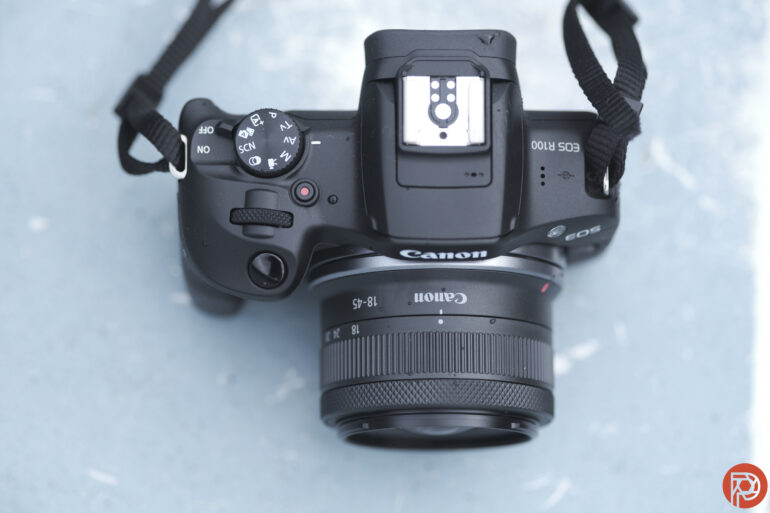
Controls are minimal on the R100. The top plate houses a mode dial, record button, single control wheel, and shutter release. There’s a tiny pop-up flash as well.
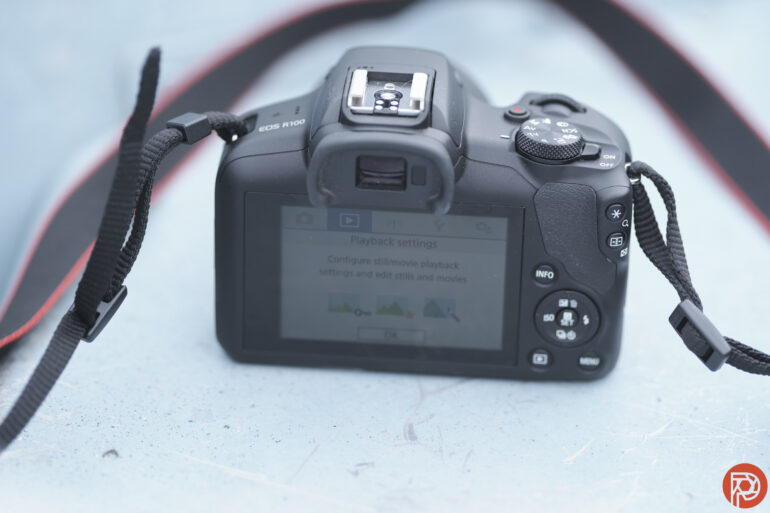
At the back of the camera, photographers will find a basic LCD screen and menu shortcuts, as well as two more shortcut buttons near the top of the thumb grip. The electronic viewfinder juts out from the body a bit, so my nose isn’t pressed into the camera body so much. The viewfinder is okay for the price point — considering budget competitors like the Nikon Z30 don’t even have one — but there is a noticeable lag to it.
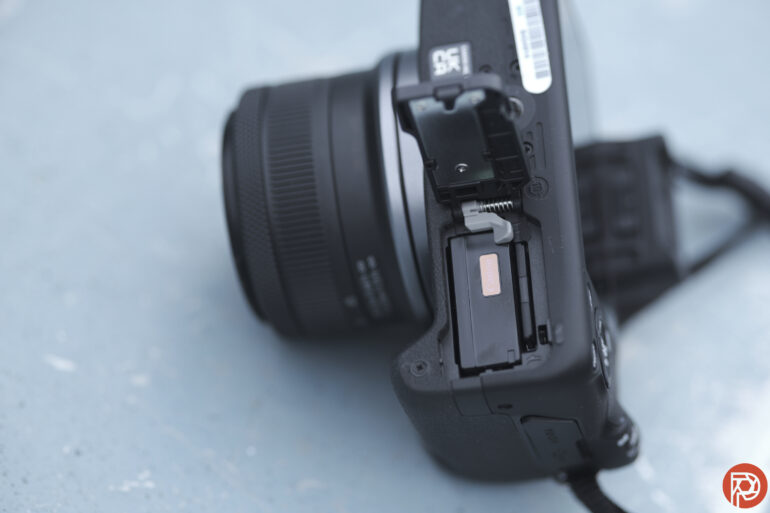
The front only has a button to release the lens; the bottom has just the battery, a single UHS-I SD card slot, and a tripod mount. The sides house ports for USB, HDMI, mic, and a remote trigger.
The Canon R100 is a very bare-bones camera. That makes sense considering the price tag. But what doesn’t make sense is that Canon is directing this body toward general consumers and vloggers. Yet, the LCD screen is fixed and not touch-sensitive. Those moving from a smartphone to a cheap mirrorless camera will still want to be able to tap the screen to select the focus point and take selfies — and for that, the R100 falls short. Vlogggers, too, will want that flipping LCD screen so that they can actually see when recording themselves. Both are found in the slightly more expensive R50.
Build Quality
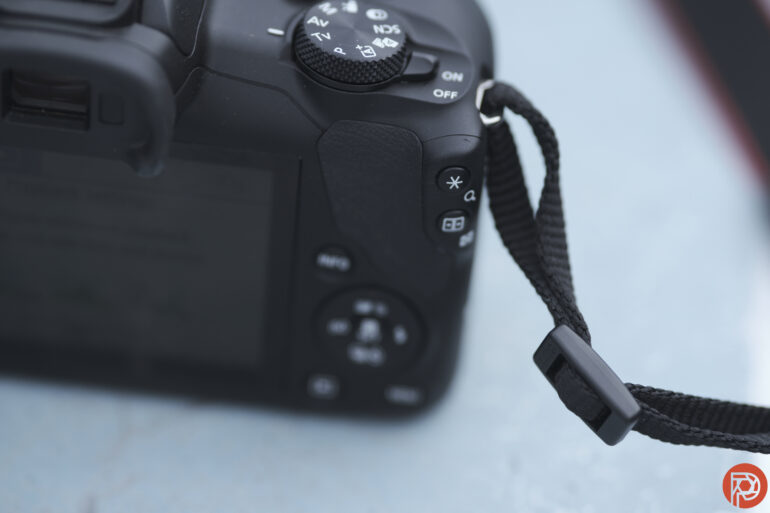
It should come as no surprise that the Canon R100 is a plasticky camera body without weather sealing — after all, it is a camera body under $500. That said, much of the body is smooth without a lot of protrusions outside of the grip and viewfinder. In fact, the cheap thin little strap that comes with this camera came undone, and it fell right off my neck. The camera was just fine. The 70-200mm f4 lens that was attached also survived, but the zoom ring is now a bit harder to turn than it originally was. While this is a cheap feeling, tiny body, the design with fewer pieces seems to have at least allowed it to survive dropping a few feet to the ground. That said, do yourself a favor and get a better strap than the thin little thing that comes with the camera.
Focusing
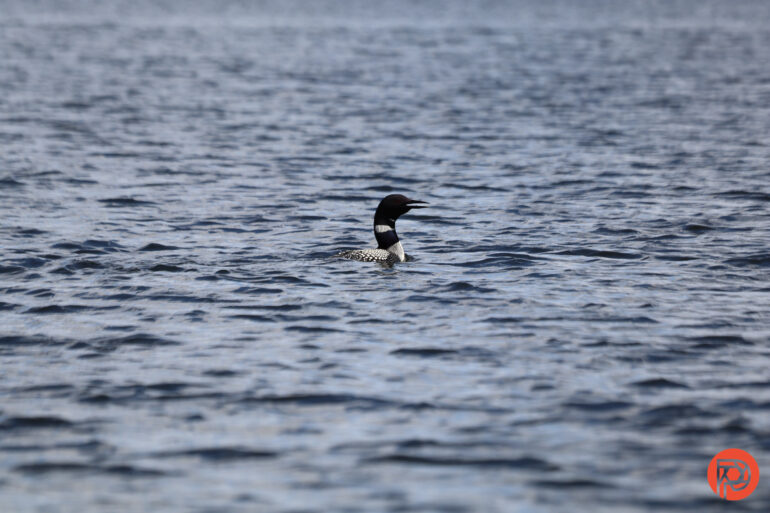
The R100 has Canon’s Dual Pixel autofocus system. But, it lacks the animal eye AF feature. It’s unsurprising that a $500 camera isn’t set up for wildlife photography. But, the everyday consumers that this body is aimed at should be aware that the autofocus system won’t automatically detect your pet’s eyes either. Occasionally, you can get lucky and manage to grab a wildlife shot that’s in focus, but not easily.
It does, however, still have human eye AF. But, the eye AF is only available in the eye AF and tracking — it’s not available with zone or single point AF area modes. The human eye AF does okay, but it does have a tendency to drop focus if the person moves towards the edge of the frame and doesn’t lock onto eyelashes as well as some more advanced cameras.
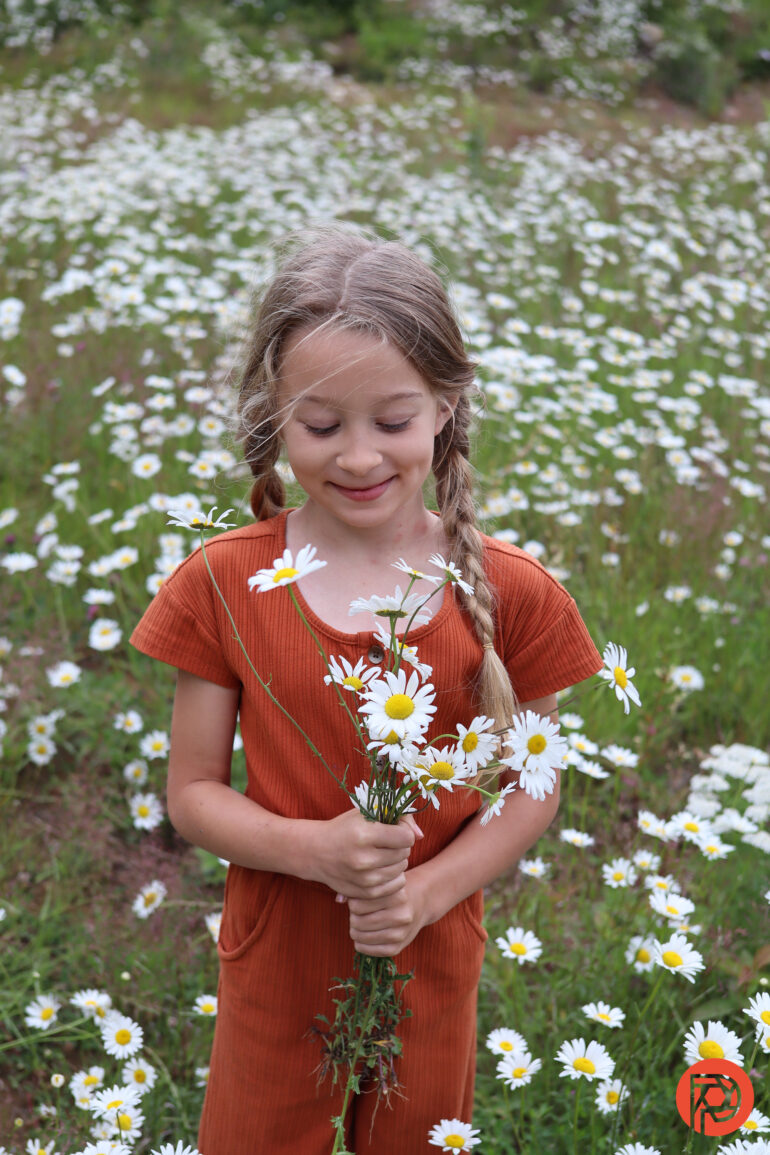
Judging the autofocus speed of a camera that only shoots six photos at a time is challenging. In a series of five photos of someone running toward the camera, the R100 only dropped the autofocus once. But, one out of five is still a 20 percent miss rate. At any rate, a camera with a 6.5 fps burst speed, and a six photo buffer isn’t a camera that’s made for sports, photographing active kids, or wildlife.
The R100 can focus indoors, but direct it at the darkest corners, and the camera struggles, sometimes failing to lock on at all. The autofocus is rated to -4 EV, so there are definitely higher-end cameras out there that can lock on in the dark easier.
Even outside of autofocus, the R100 feels sloth-like. The max burst speed is just 6.5 frames per second. The camera can only take six RAW photos before stopping to catch up. While it’s catching up, you can’t change many settings either. You have to sit there and wait for the camera to finish writing to the memory card before viewing your photos or taking more. My iPhone can take photos faster than the R100 can in RAW mode. (Of course, my iPhone cost more than $500, so it’s not fair comparison.) On JPEG-only, the camera can record 100 shots in a row and feels a bit less sluggish but still behind. In short — it’s not a great option if you want to photograph anything moving.
Ease of Use
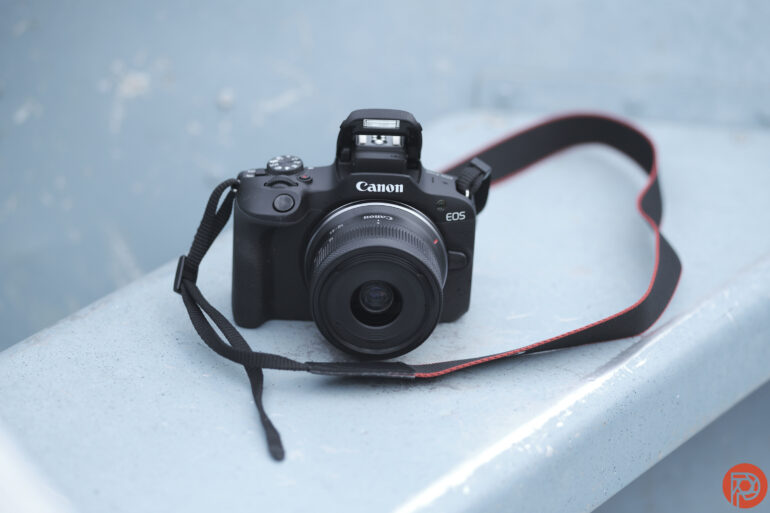
The Canon R100 is designed for new photographers coming from smartphone photography. And the simple control design speaks to that. There’s an intelligent auto mode on the mode dial and things like explanations inside the camera menu of what options are inside that particular sub-menu. Inside the intelligent auto, novices can do things like adjust the amount of background blur without ever knowing the word “aperture.”
Yet, at the same time, several key features would have made the R100 more beginner friendly were inevitably cut to keep the cost low. The camera lacks stabilization to help prevent blur from shaky hands. It lacks a touch-screen, so newbies need to learn how to adjust the focus the more traditional way. It lacks animal eye-AF to quickly lock focus on pets. The Canon R50, while a little bit more expensive, is going to be much easier for beginners to pick up because it has a touchscreen that also flips forward for selfies, plus more intelligent autofocus modes to automatically lock onto pets, animals, and vehicles.
The battery life on the R100 is okay — Canon lists it at 340 shots using the viewfinder or 430 with the monitor. As per usual, though, those numbers are often grossly underestimated — I captured twice that much and still didn’t need to recharge.
Ultimately, the R100 flounders when it comes to the user experience. And that’s not ideal for a camera aimed at beginners. Cameras for beginners should be simple — but also get novices hooked on photography. That’s tough to do when the user experience falls a bit flat. I understand that Canon’s goal with the R100 is to produce a cheap camera, but the photographers that are going to buy a camera like this are going to be better served by touchscreens at the very least.
Metering
The Canon R100 does a solid job of getting the exposure right in typical lighting scenarios, if anything, erring slightly dark. Using the Sunny 16 rules, the camera was able to take good exposure.
Image Quality
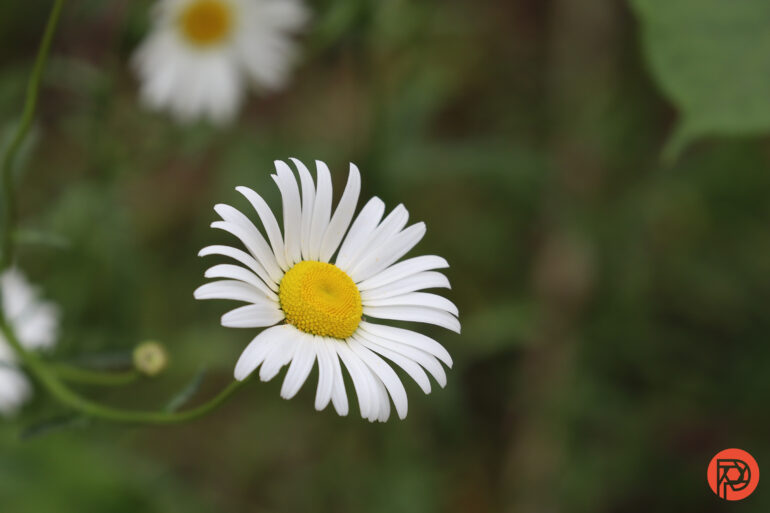
The Canon R100 is essentially a five-year-old camera wearing new clothes. The R100 uses the DIGIC 8 processor, which is the one that came out in 2018 with the Canon EOS M50. The R100 also has the same number of megapixels and the same size sensor — though notably doesn’t use an optical low-pass filter like the M50. Even a five-year-old camera can produce results much better than a smartphone however, and the R100 does deliver some nice colors and background blur. Considering the price tag, the photos are amazing. But, the older processor starts to show when working in limited light and cranking up the ISO.
JPEG Quality

JPEGS straight from the Canon R100 have nice colors, especially in soft light such as shade or clouds. Outdoors, the R100 produces nice clean JPEGs. Using a lens like the 28mm f2.8 with a wider aperture, the crop sensor camera is still capable of producing some nice soft backgrounds as well. Pair it with a bit nicer lens and the photos don’t look like they came from a $480 camera.
High ISO Output
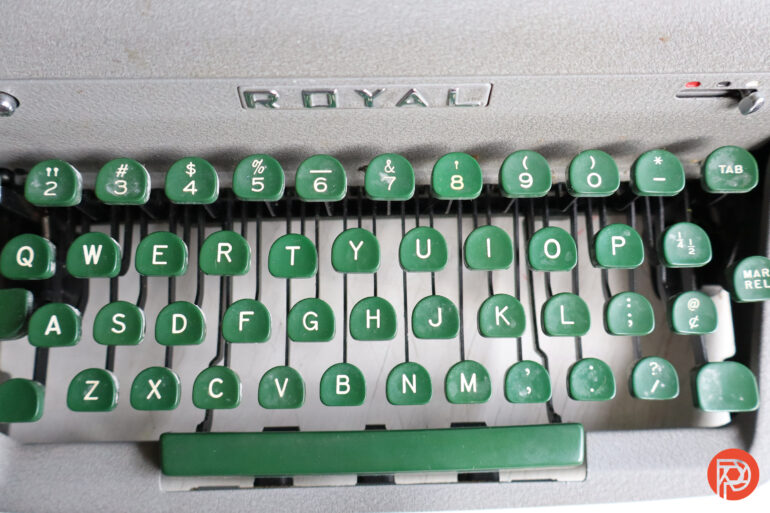
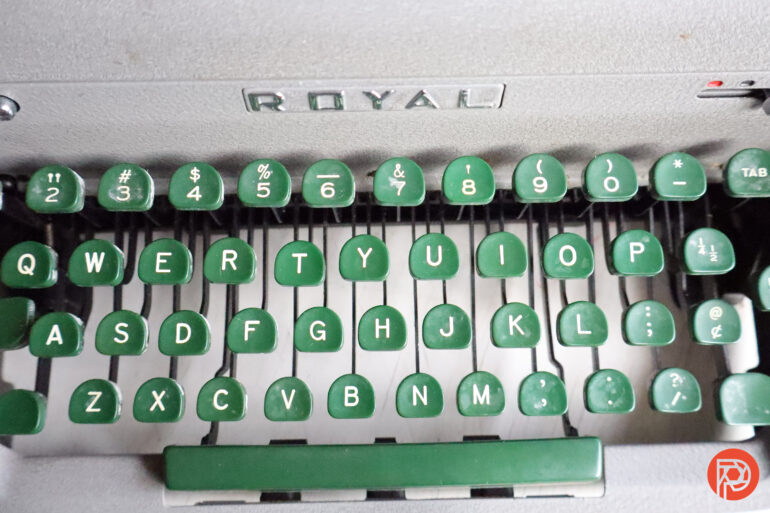
However, the Canon R100 loses detail very quickly when lighting is limited. At ISO 800, noise starts to be noticeable at 100 percent. Above ISO 3200, images lose enough detail that they start to look soft, often lacking sharpness at the focal point. However, JPEGs do a good job of reducing colors noise, even when maxing out the ISO.
Translation for newbie photographers: photos taken indoors or after sunset are going to look less sharp. The R100 will still deliver cleaner images than a smartphone in the same low light. But, this is where the $500 camera starts to show its low price point when compared to pricier mirrorless cameras.
RAW File Versatility
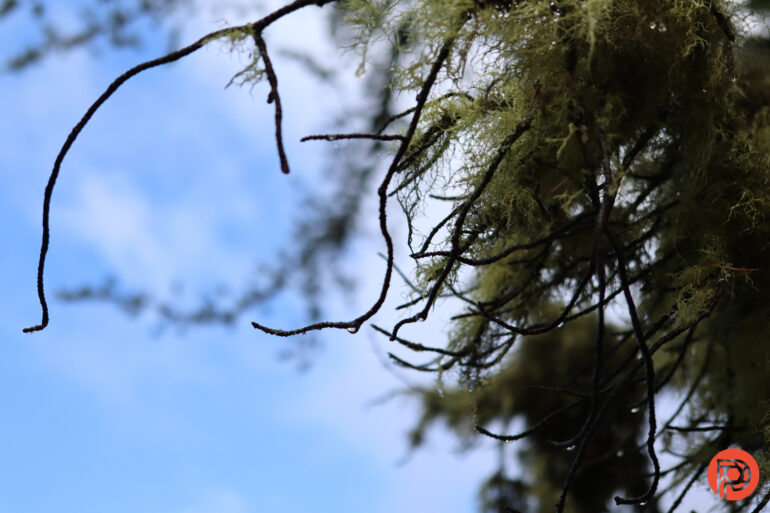
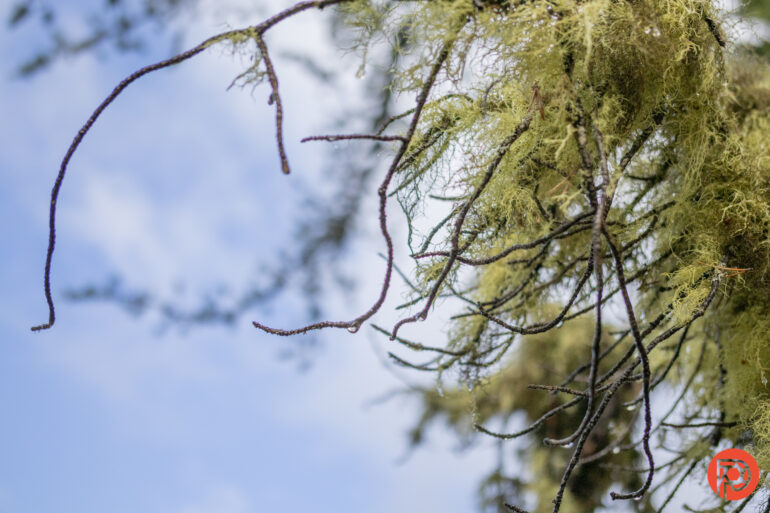
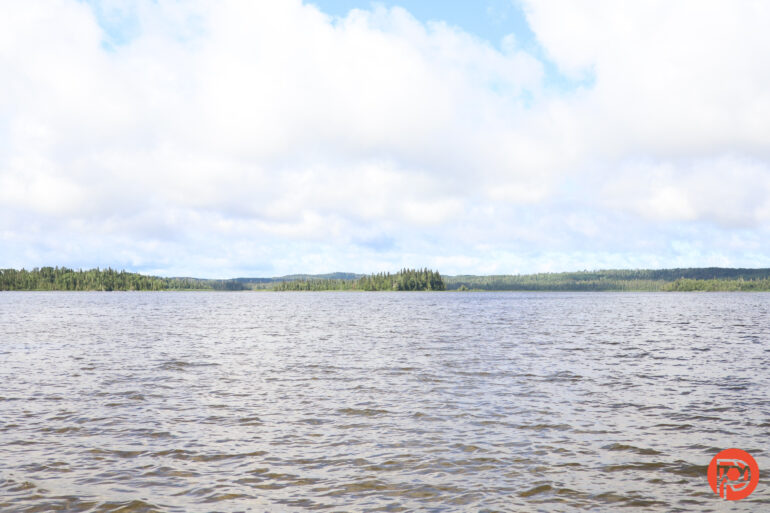
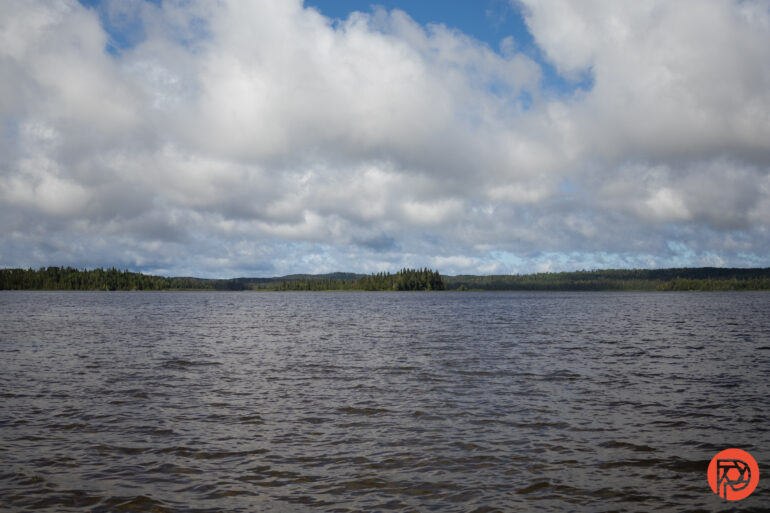
Shooting in RAW, I could still recover some lost details in a partially blown-out sky, as well as bringing back some of the dark shadows. The files aren’t as versatile as a full-frame camera, and extreme adjustments are going to exaggerate any noise. But there’s enough wiggle room to fix basic exposure errors.
Extra Image Samples
From day one, The Phoblographer has been huge on transparency with our audience. Nothing from this review is sponsored. Further, lots of folks will post reviews and show lots of editing in the photos. The problem then becomes that anyone and everyone can do the same thing. They’re not showing what the lens can do. So we have a section in our Extra Image Samples area to show edited and unedited photos. From this, you can make a decision for yourself.
Unedited
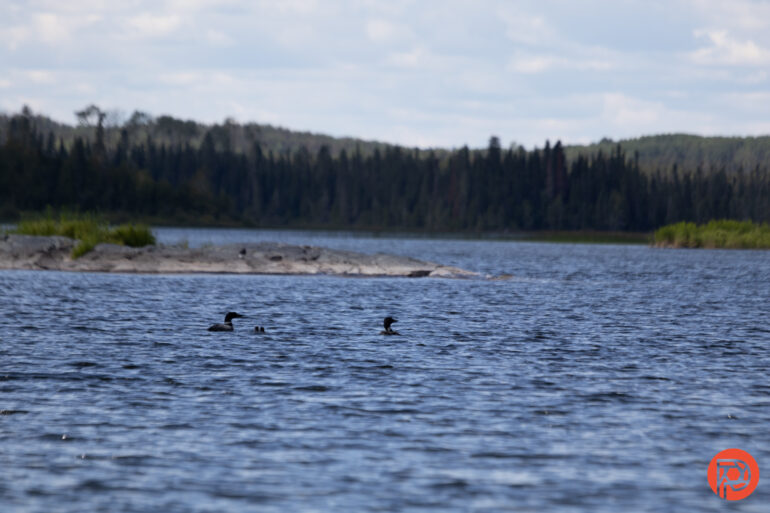
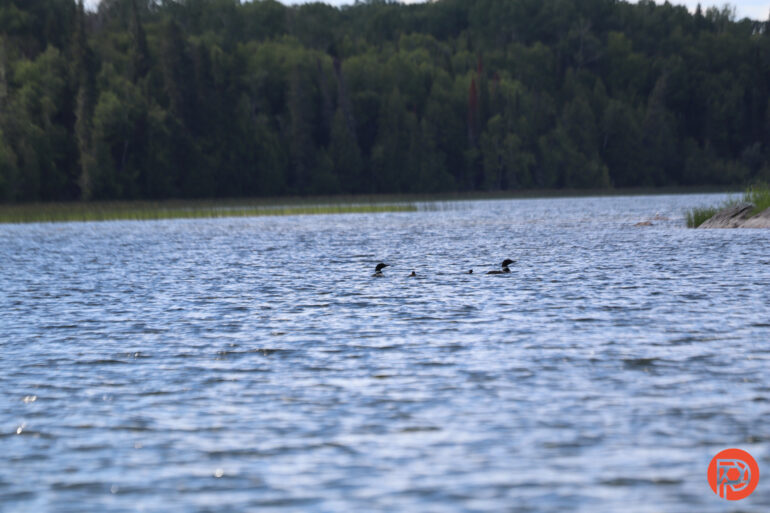
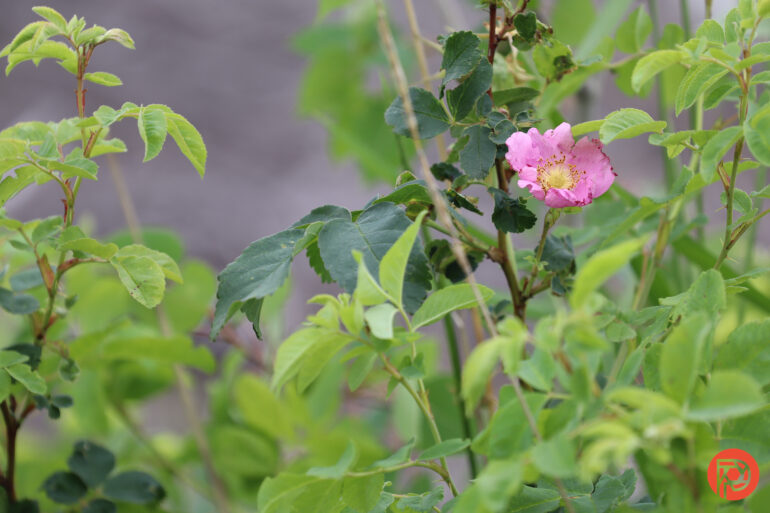
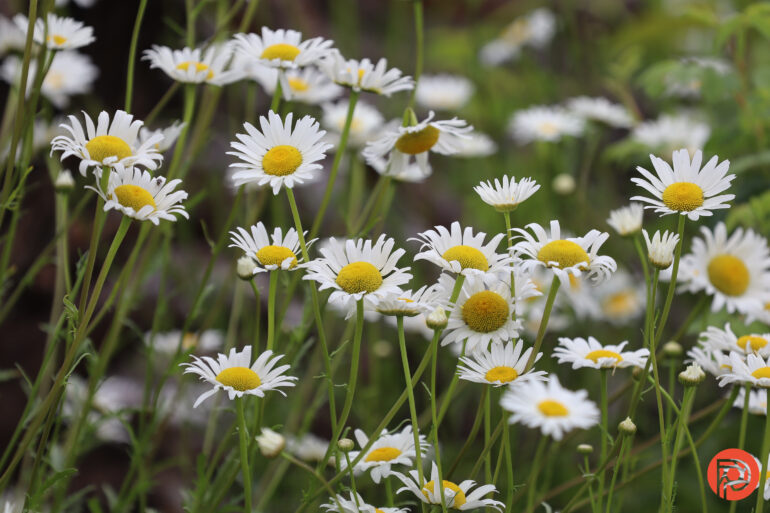
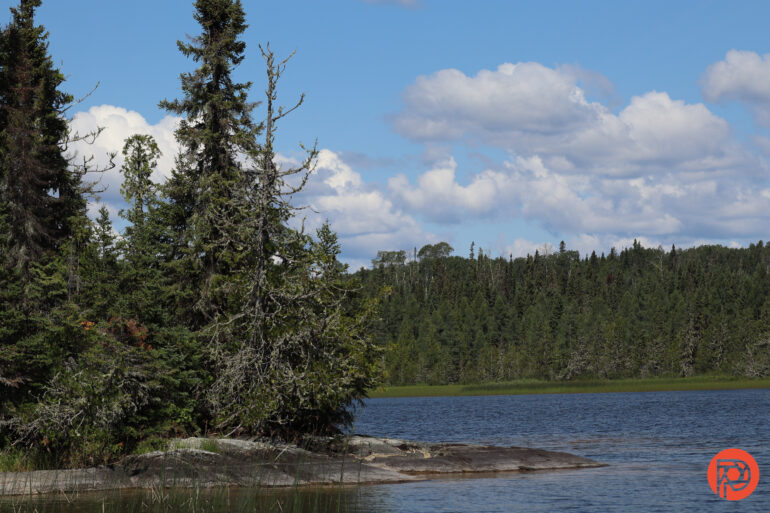
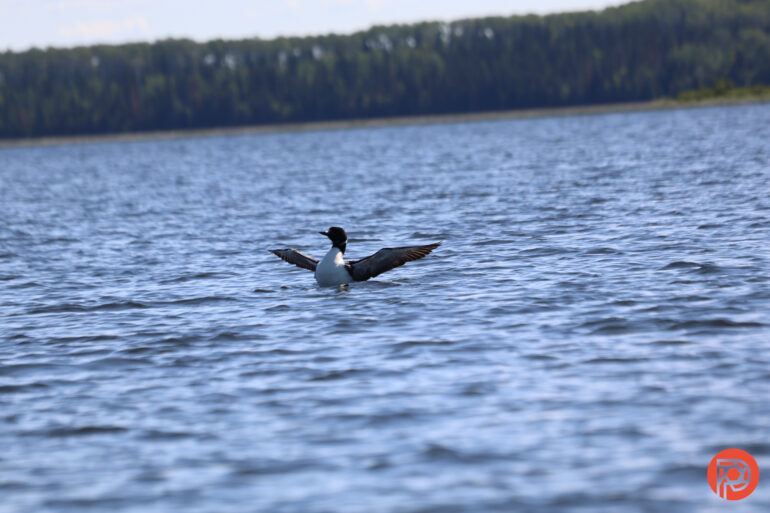
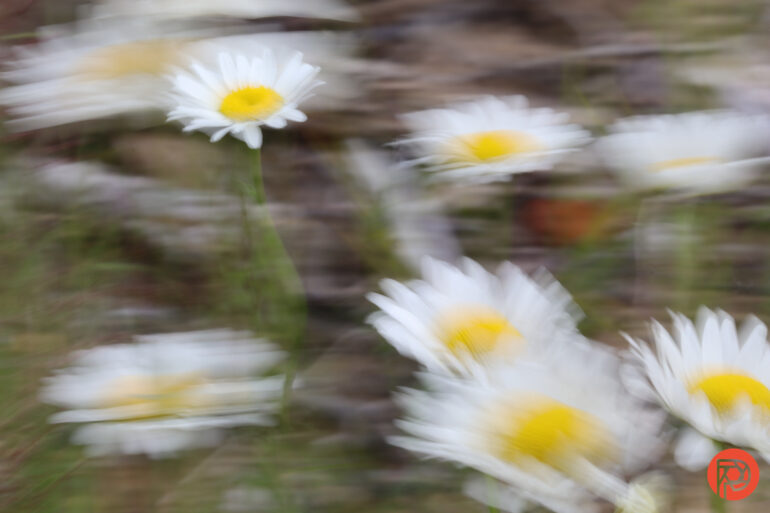
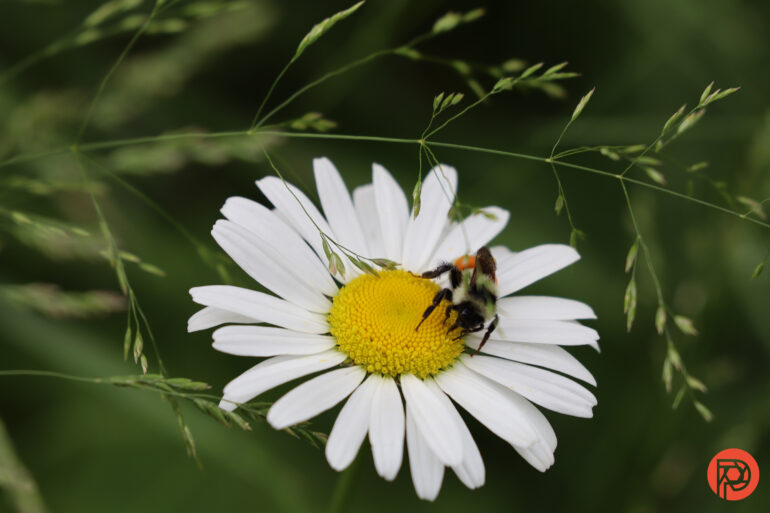
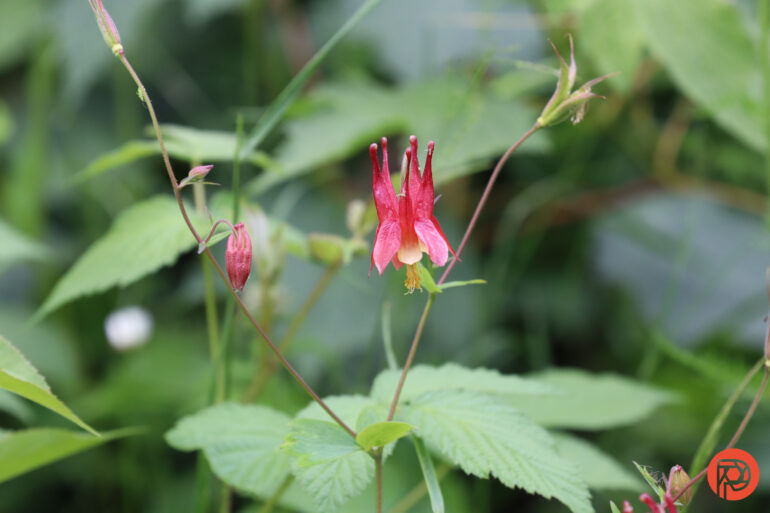
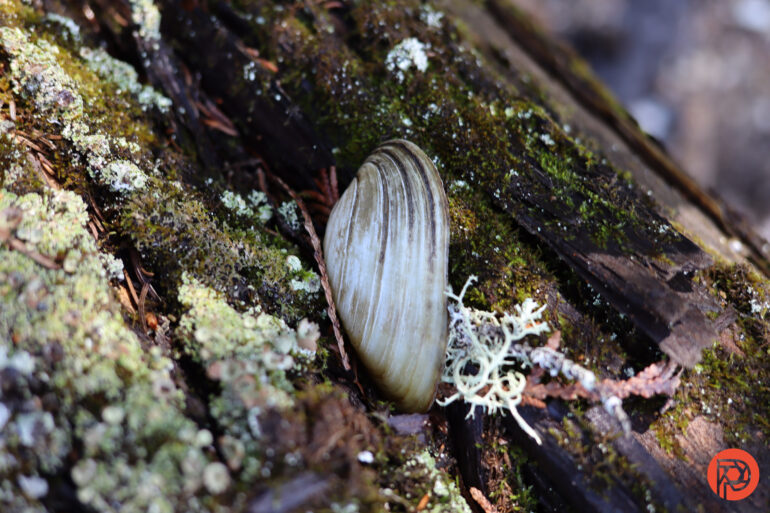
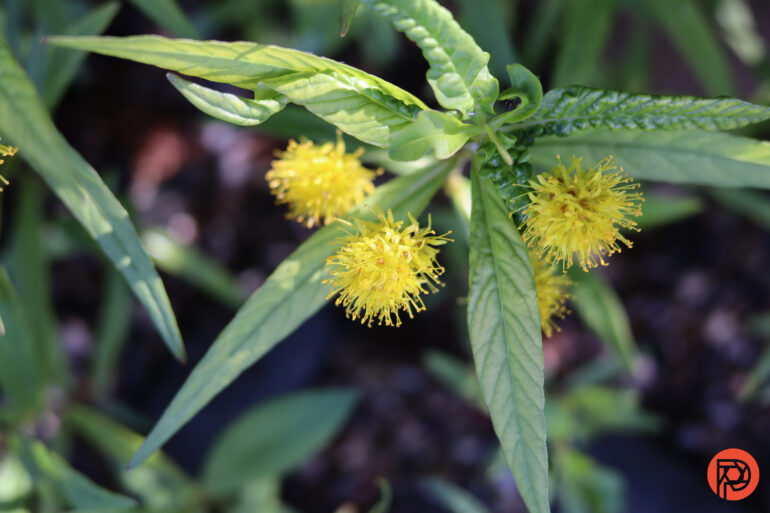
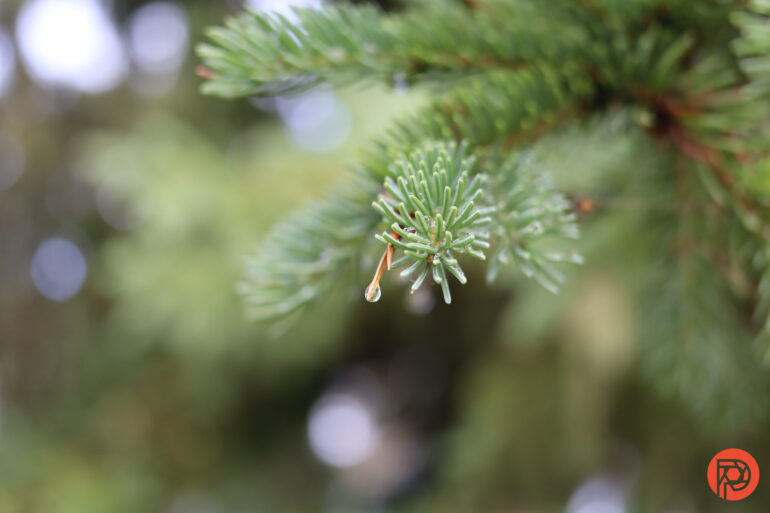
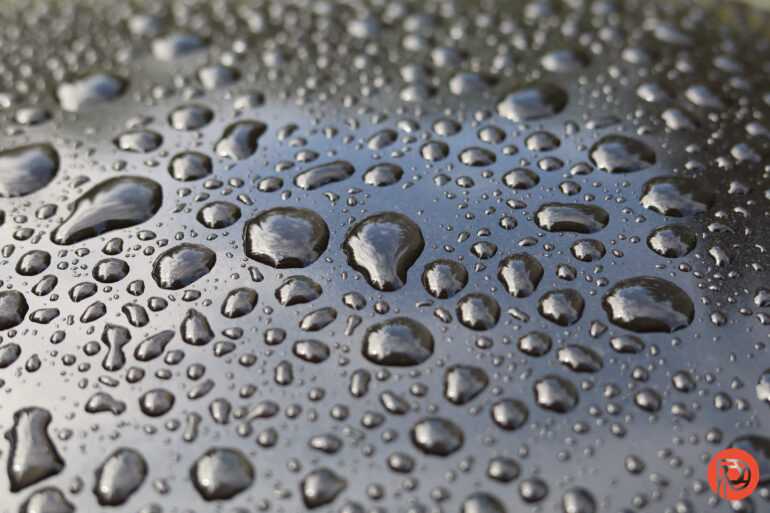
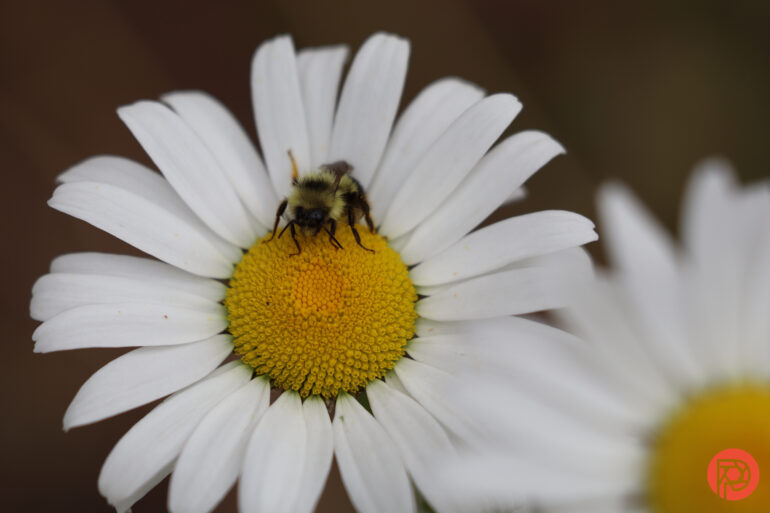
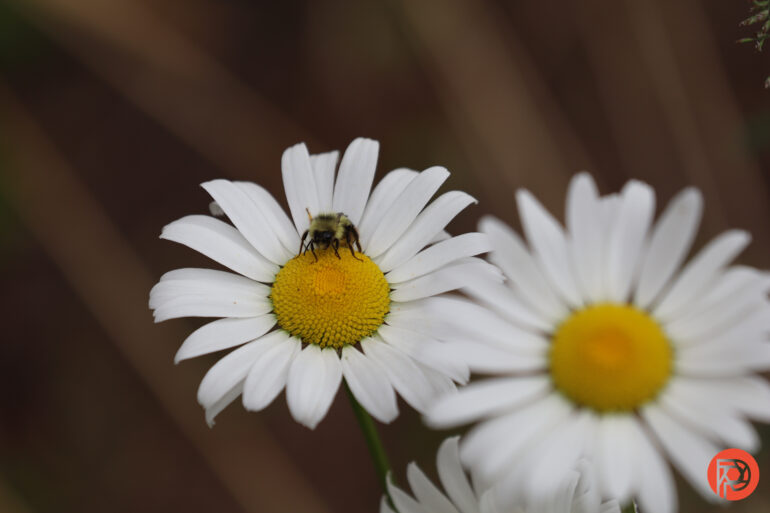
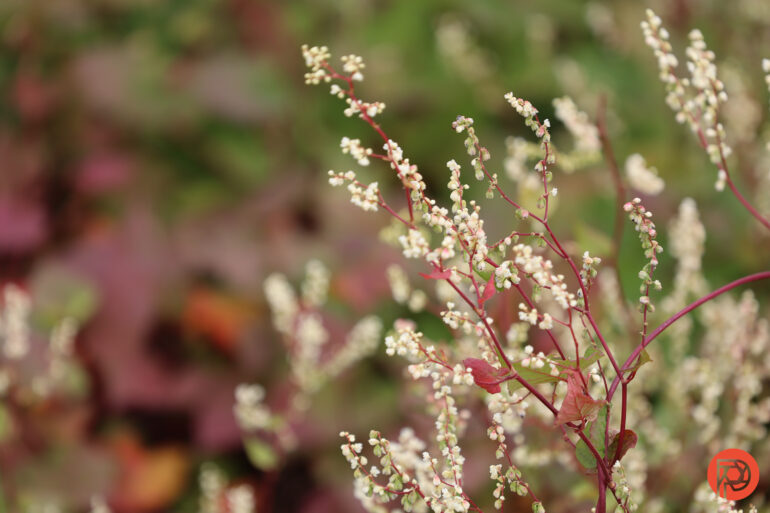
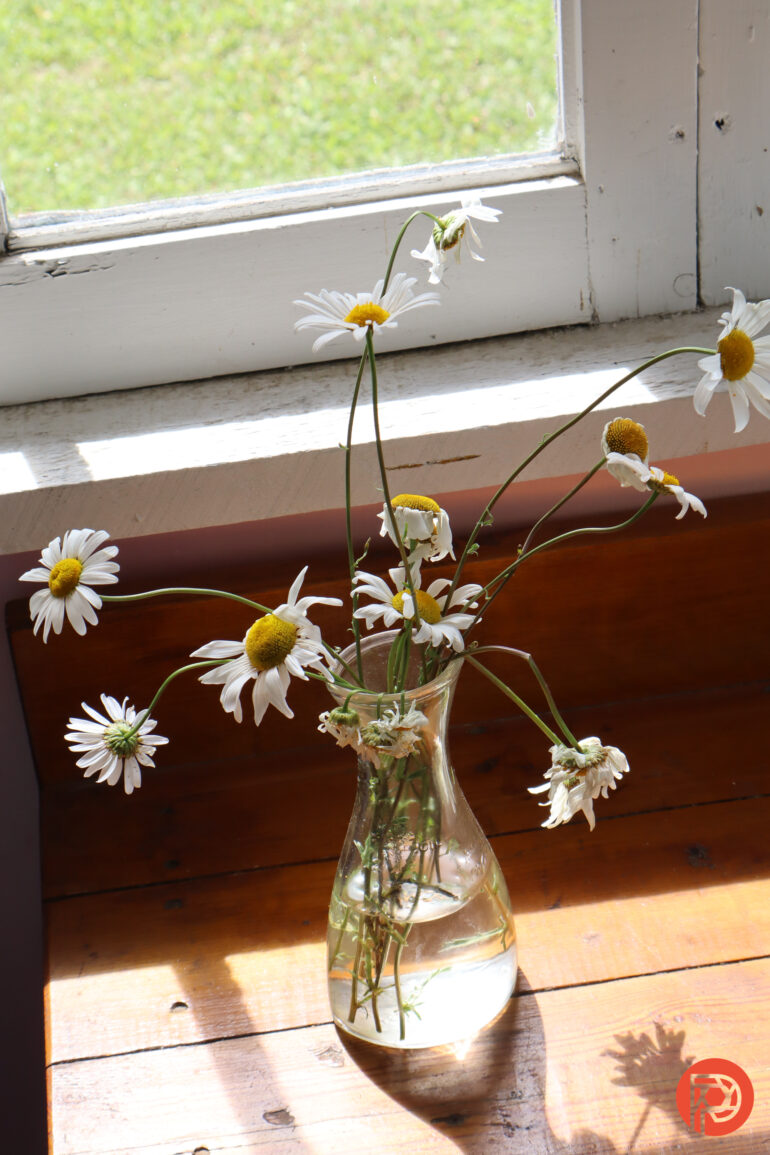
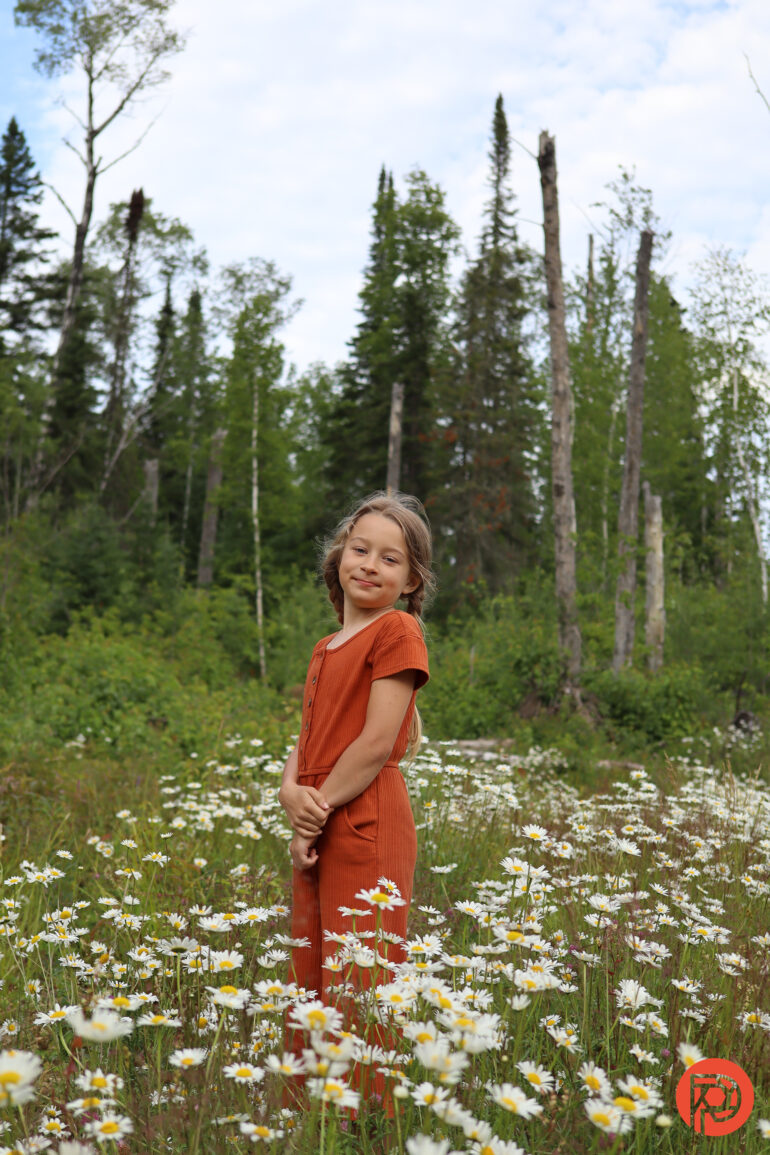
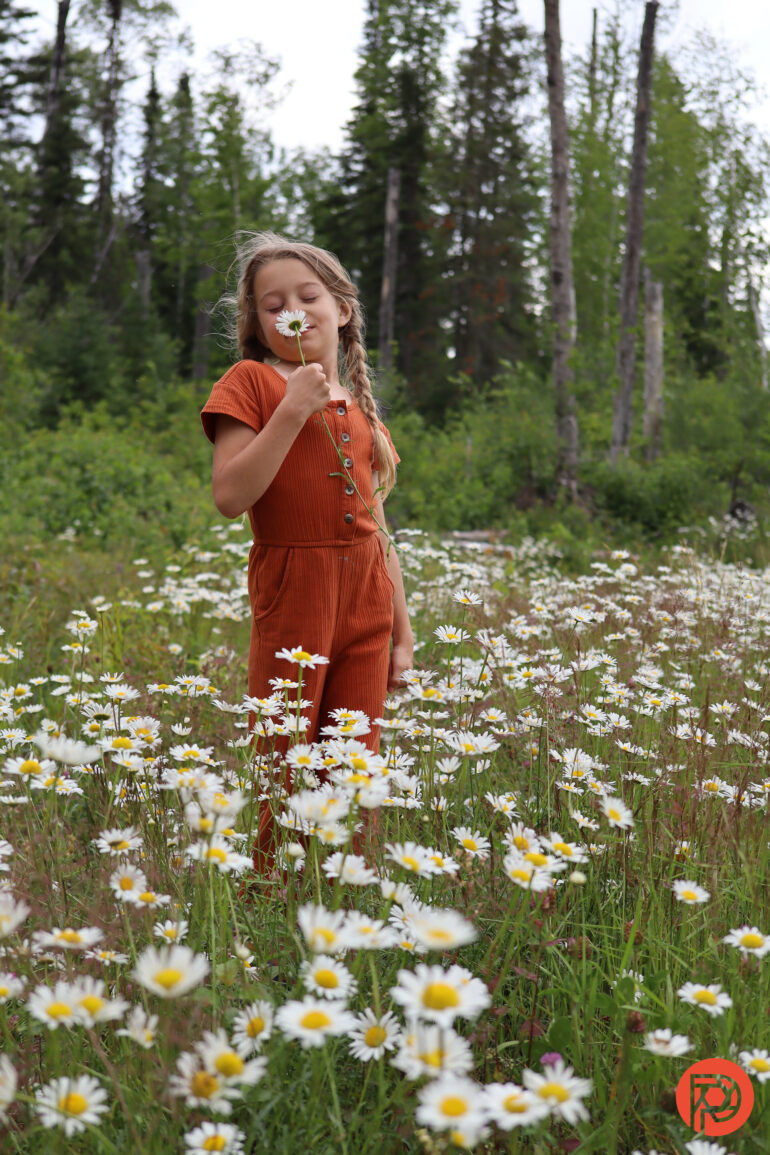

Edited
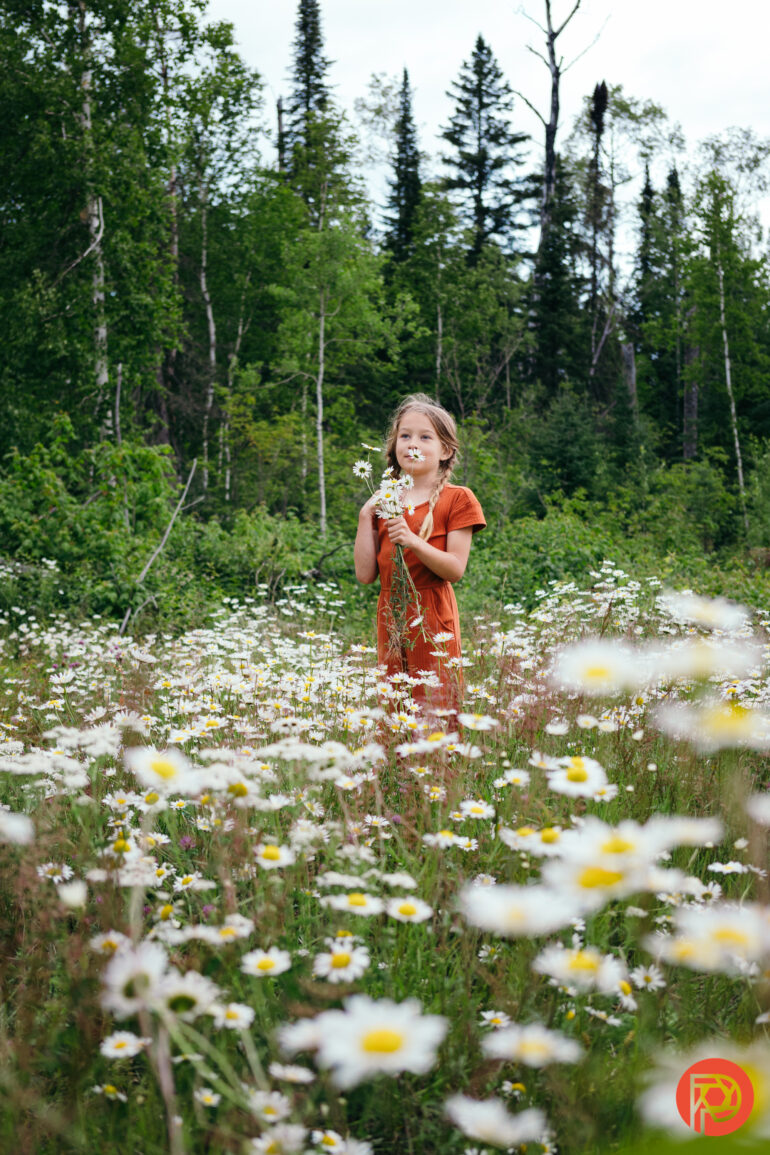
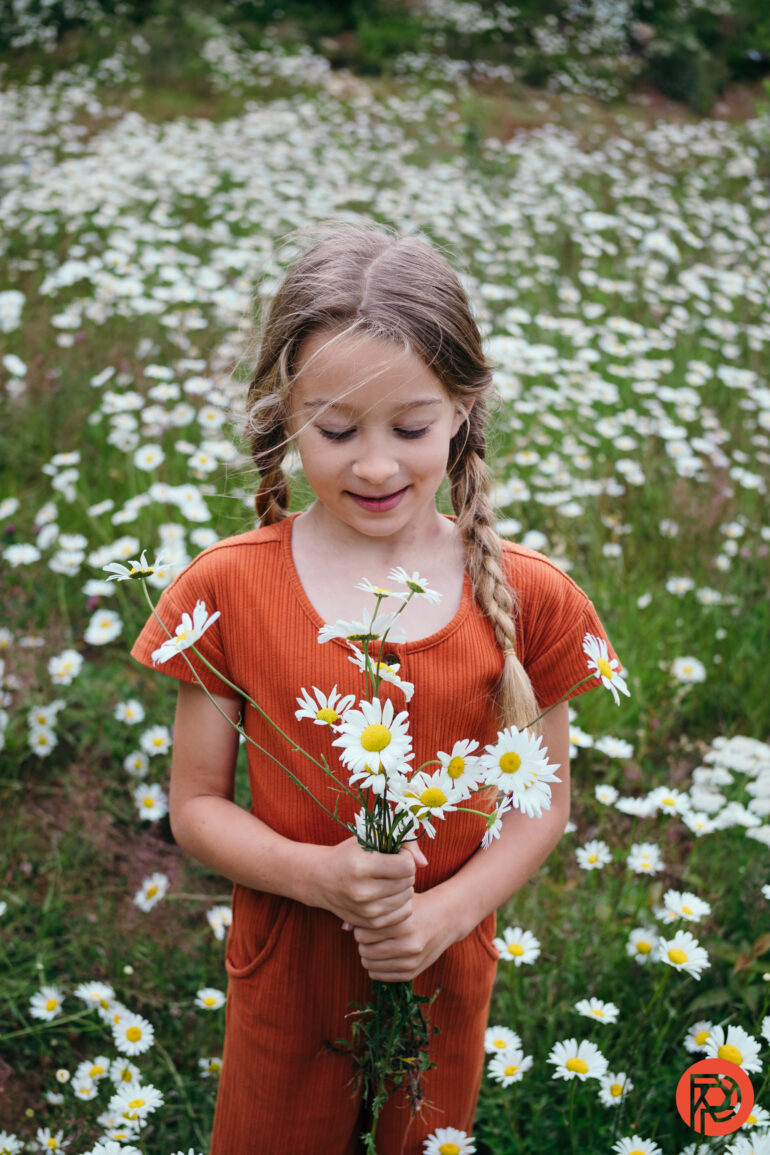
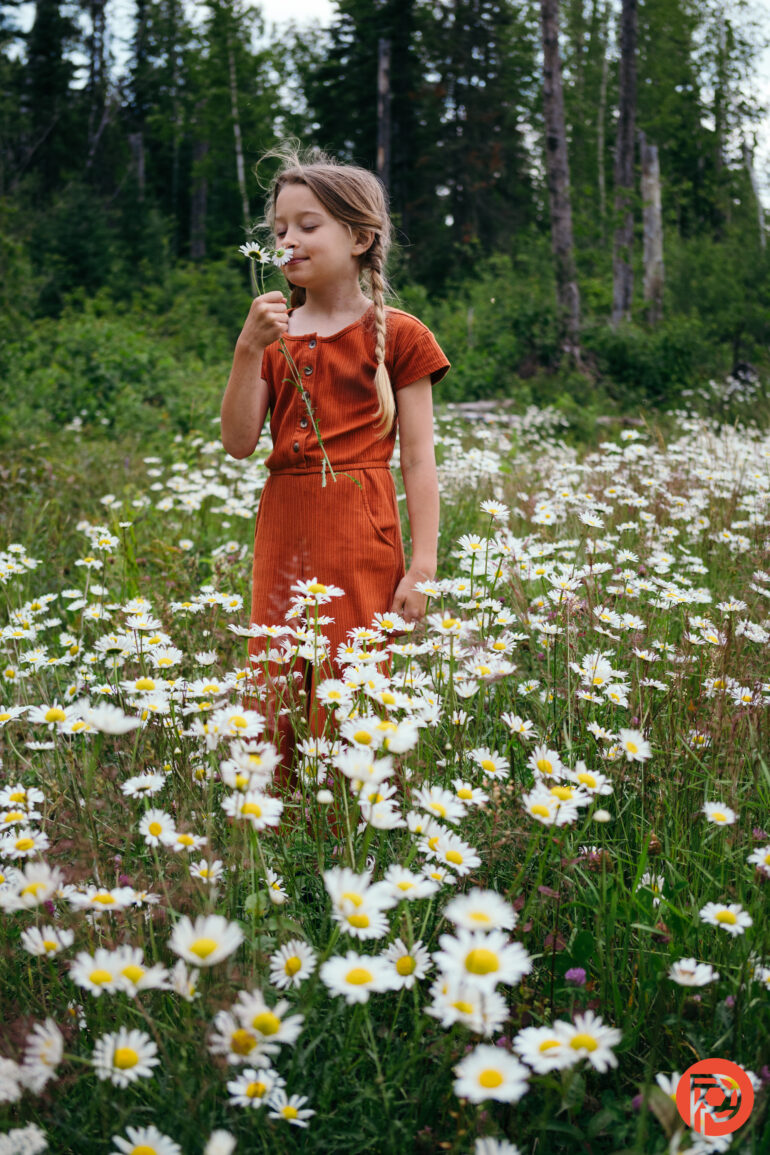
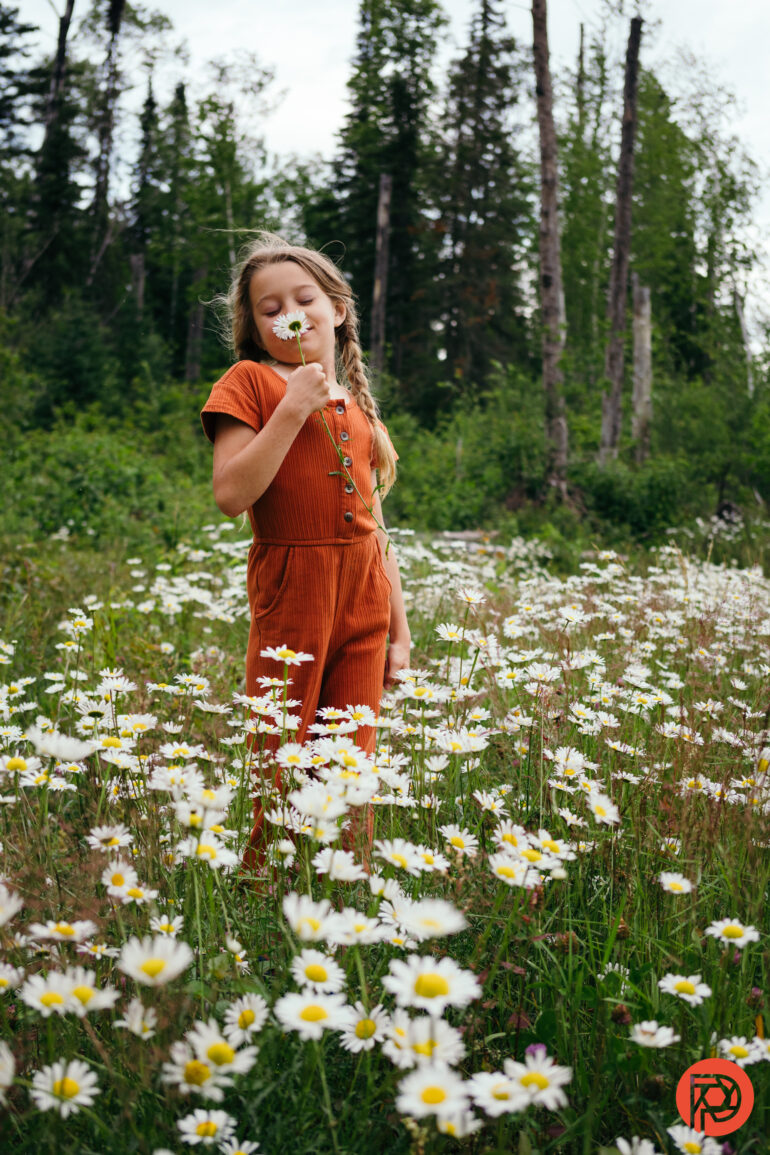
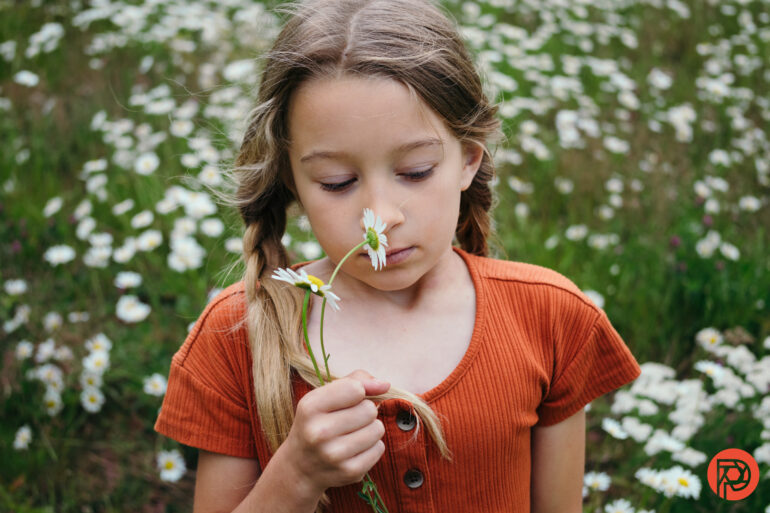
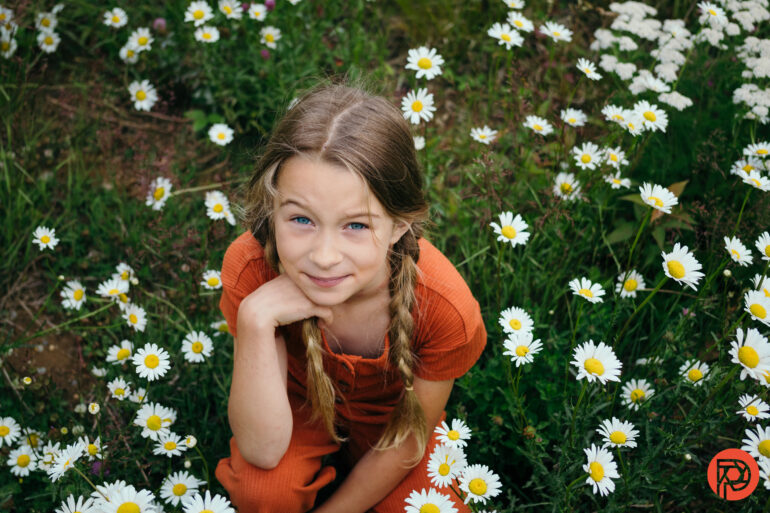
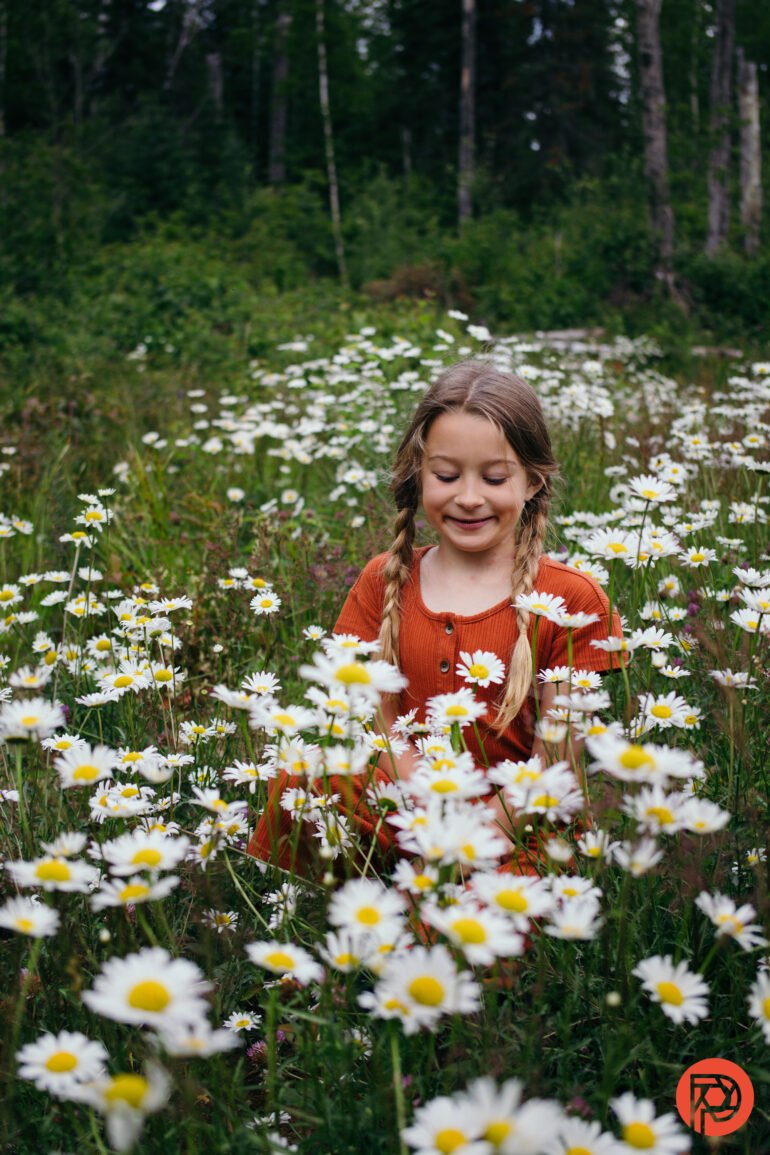
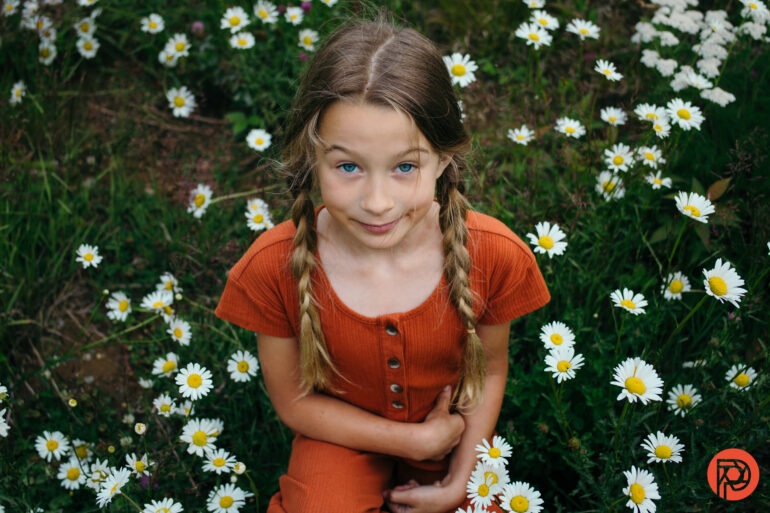
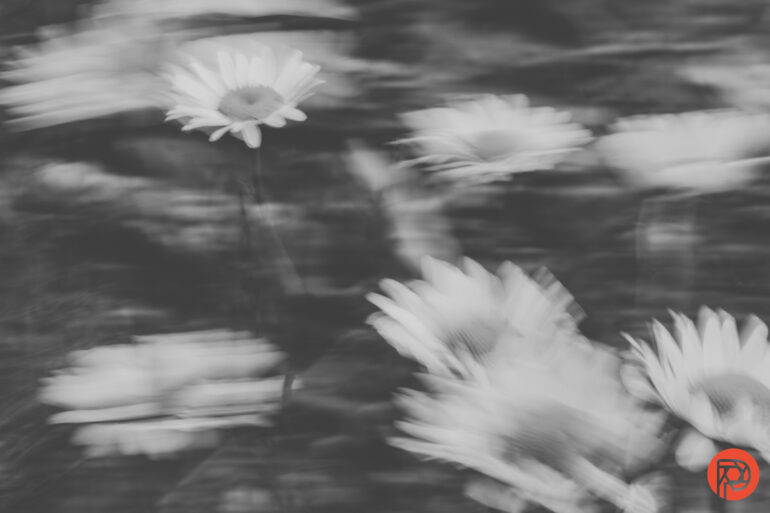
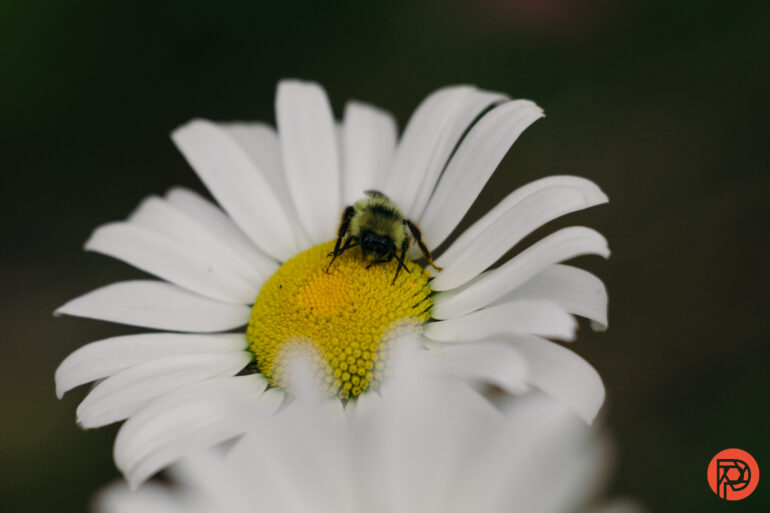
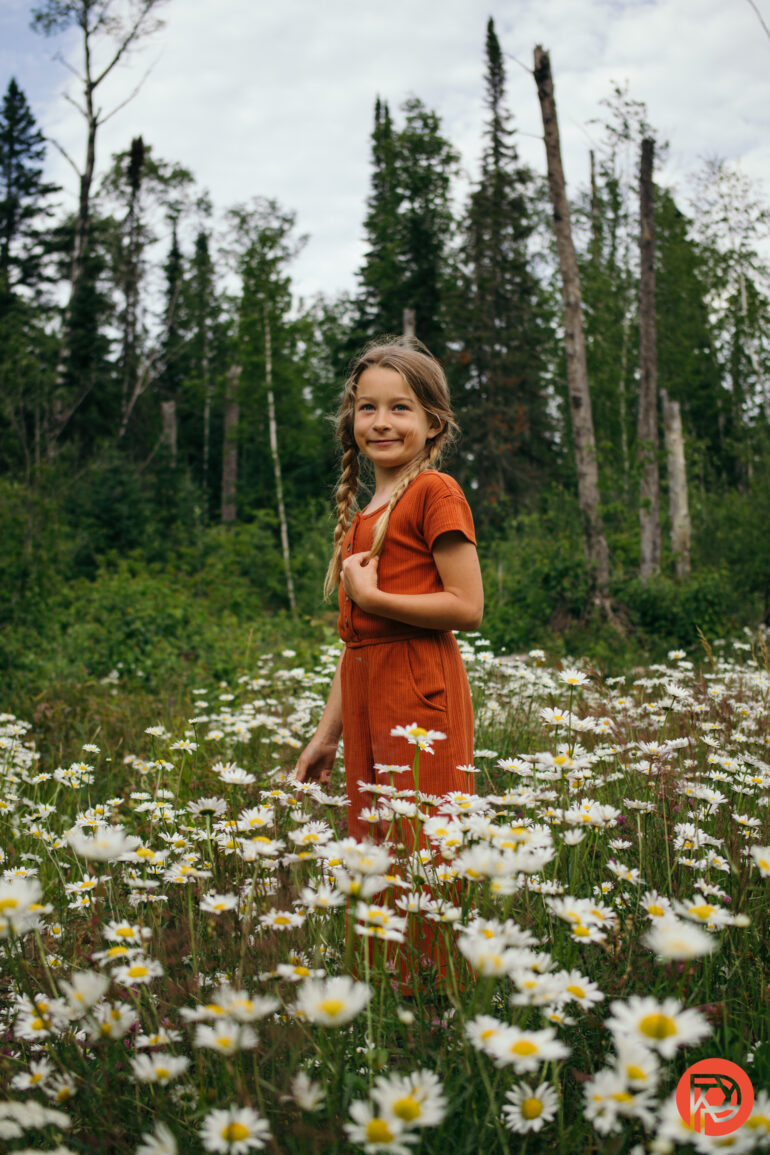
Who Should Buy It?
The vloggers and new photographers that the Canon EOS R100 is aimed at are going to be better served by cameras like the Canon R50, which is still a bit sluggish but offers a tilting touchscreen and animal eye AF. Yes, the R50 is a little pricier. But it offers features that will make learning photography easier for newbies. An even better choice is the R10, which keeps the newbie-friendly controls but shoots fast enough to photograph kids and youth sports. Still better is the Canon R7, which has stabilization, so too much coffee doesn’t translate into blurry images. Yes, the price increases with each model jump up, but each jump up also decreases the likelihood that new photographers will outgrow the camera quickly.
Outside of the Canon R system, new photographers on a budget should also consider the Nikon Z30, which is faster, weather-sealed, and still does well in limited lighting. The Z30, however, lacks a viewfinder and has a limited 300-shot battery life. The Sony a6100 is also an affordable beginner-friendly camera with a fast autofocus and burst speed, both human and animal eye AF, good battery life, and a flip-up screen. Newbies should also check out our full list of recommendations for the best cameras under $1,000.
The Canon R100 is good for affordable snapshots for consumers that are never really going to get off of auto mode. The image quality to price ratio is quite good, but it sacrifices speed and user experience in order to get there. New photographers with the intention of going all in are going to outgrow this slow, basic camera very quickly. Smartphone photographers are also going to be frustrated easing into the world of mirrorless cameras without a touchscreen. Personally, I’d wait and save a little bit more and pick up the Canon R7, Sony a6100, or Nikon Z30.
Tech Specs
LensRentals lists the following specifications for the Canon EOS R100:
- Brand: Canon
- Camera Type: Mirrorless
- Environmental
- Operating Temperature: 32 to 104°F / 0 to 40°C (Recommended)
- Operating Humidity: 0 to 85%
- Exposure Control
- Shutter Type: Electronic Shutter
- Shutter Speed – Electronic Shutter: 1/4000 Up to 30 Seconds in Bulb Mode, 1/4000 Up to 1 Second in Manual Mode
- Bulb/Time Mode: Bulb Mode
- ISO Sensitivity: 100 to 12,800 (Extended: 100 to 25,600)
- Metering Methods: Center-Weighted Average, Evaluative, Partial, Spot
- Exposure Modes: Aperture Priority, Auto, Manual, Program, Shutter Priority
- Exposure Compensation: -3 to +3 EV (1/3 EV Steps)
- Metering Range: -2 to 20 EV
- White-Balance Presets: Auto, Cloudy, Color Temperature, Custom, Daylight, Flash, Fluorescent (White), Shade, Tungsten
- Continuous Shooting – Electronic Shutter: Up to 6.5 fps at 24.1 MP for up to 100 Frames (JPEG) / 6 Frames (RAW)
- Interval Recording: Yes
- Self-Timer: 2/10-Second Delay
- Flash
- Built-In Flash: Yes
- Flash Modes: TTL Auto
- Maximum Sync Speed: 250 Second
- Flash Compensation: -2 to +2 EV (1/3 EV Steps)
- Dedicated Flash System: eTTL
- External Flash Connection: Hot Shoe
- Focusing
- Focus Type: Auto and Manual Focus
- Focus Modes: Continuous-Servo AF, Manual Focus, Single-Servo AF
- Autofocus Points – Photo: Phase Detection: 3975
- Autofocus Points – Video: Phase Detection: 3375
- Autofocus Sensitivity: -4 to +20 EV
- General
- Battery Type: 1x LP-E17 Rechargeable Lithium-Ion
- Tripod Mounting Thread: 1x 1/4″-20 Female (Bottom)
- Dimensions (W x H x D) – camera only: 4.6 × 3.4 × 2.7″ / 116.3 × 85.5 × 68.8mm
- Weight – camera with battery and recording media: 0.7 lb. / 309 g
- Weight – camera body only: 0.8 lb. / 356 g
- Imaging
- Sensor Resolution
- Actual: 25.8 Megapixel
- Effective: 24.1 Megapixel
- Image Sensor: 22.3 × 14.9mm (APS-C) CMOS
- Crop Factor: 1.6x
- Image Stabilization: None
- Built-In ND Filter: None
- Capture Type: Stills & Video
- Sensor Resolution
- Interface
- Media/Memory Card Slot: Single Slot: UHS-I SD/SDHC/SDXC
- Video I/O: 1x Micro-HDMI Output
- Audio I/O: 1x 1/8″ / 3.5mm TRS Stereo Microphone Input on Camera Body
- Other I/O: 1x USB-C (USB 2.0) Input/Output
- Wireless: 2.4 GHz Wi-Fi (802.11b/g)
- Mobile App Compatible: Yes: Android & iOS
*As of May, 2023: Check with manufacturer for the most up-to-date compatibility - Global Positioning (GPS, GLONASS, etc.): None
- Item Type: Camera
- Mfr. Model Number: 6052C002
- Monitor
- Size: 3.0”
- Resolution: 1,040,000 Dot
- Display Type: Fixed LCD
- Mount: Canon RF
- Still Image Capture
- Aspect Ratio: 3:2
- Image File Formats: C-RAW, JPEG, RAW
- Video Capture: Internal Recording Modes
- H.264/MPEG-4 AVC 8-Bit
- UHD 4K (3840 × 2160) at 23.98 fps [120 Mb/s]
- 1920 × 1080 at 59.94 fps [60 Mb/s]
- 1920 × 1080 at 23.98/29.97 fps [30 Mb/s]
- 1920 × 1080 at 120 fps [52 Mb/s]
- 1280 × 720 at 59.94 fps [26 Mb/s]
- External Recording Modes: None
- Recording Limit: Not Specified by Manufacturer
- Broadcast Output: NTSC/PAL
- IP Streaming: Yes
- Built-In Microphone Type: Stereo
- Viewfinder Type: Built-In Electronic (OLED)
- Size: 0.4”
- Resolution: 2,360,000 Dot
- Eye Point: 22mm
- Coverage: 100%
- Magnification: Approx. 0.95x
- Diopter Adjustment: -3 to +1


